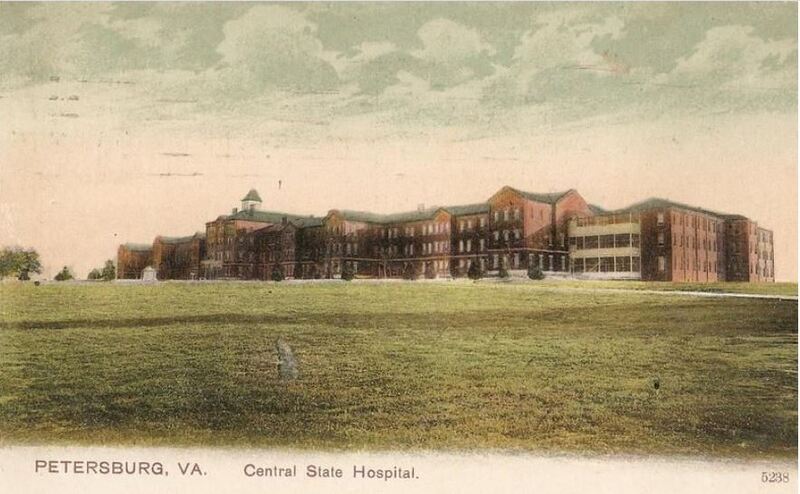History of the Central State Hospital
How can we continue to educate ourselves on history that may be forgotten or unseen? There have been many events that are overlooked because many people believe that the past should remain in the past. This should not be the case. Particular events educate individuals on how it has shaped and will continue to shape our world. This project will focus on how the central state hospital was built, how it operated, and why it changed over the years.
The Central State Hospital was opened in 1870 by the Freedman's Bureau in order to build hospitals and other facilities for African-American individuals. This hospital was located in Petersburg and served only 80 African American psychiatric patients during the first 5 years of opening. These young men were admitted there in hopes of treating mental illnesses. However, during the mid-1800s, the variety of treatments doctors used is something we would consider inhumane today. [1]The Common Wealth of Virginia revealed that during the next century, the rate of hospitalization doubled compared to the African American proportion of Virginia’s population. Although many locals felt uneasy considering the events that occurred there, Politicians came up with ways to destroy the controversies surrounding the hospital and create new positive feelings such as changing the name of the Asylum from Central Lunatic Asylum to Central State Hospital.
This exhibit will focus on the year 1915 to examine the annual report in detail.
Employment of Patients
Individuals were each assigned jobs in order to support their journey of recovery. Having a schedule and work was a way for individuals to get accustomed to their own responsibilities in the outside world as well as a way to keep the hospital well-maintained. Patients made up for the lack of employees at the hospital and were in charge of multiple duties. Seventy-eight percent of patients were employed. The majority of male patients worked to keep the ward clean and the farm well kept and the majority of female patients also worked cleaning the ward and repairing clothing that may have been damaged. The employment of patients plays a huge role in running the hospital. They had their own kitchen, repair, and blacksmith shop staff. Those with suicidal tendencies were given employment every day and recreation and diversion were provided. [2] Annual reports stated that patients appeared “so much happier and more comfortable than they have ever been”. With very few workers, it was difficult for them to observe their work and the conditions. However, they were not overworked. The number of hours working daily fell between 3 to 8 hours.
Causes of Death
Within the year 1915, a total of 252 patients passed away from general diseases. Forty-nine death cases were caused by Pallegra and Tuberculosis. There were no treatments for them to get better once they were diagnosed with these general diseases. The deaths revolving around Tuberculosis were high because of the lack of space in the Hospital. During this time, individuals were not isolated so the TB bacteria was able to spread to other individuals. However, all deaths were due to natural causes except 1. She was not closely evaluated and was left alone in her deep depression. She, unfortunately, committed suicide but the death was ruled an accident, and was said that it was due to no negligence on the part of employees. However, from the 1870s, there were 3,885 deaths and the majority of them were middle-aged men. Seven deaths were ruled unknown and two of them were ruled a suicide. The mystery behind these 7 deaths will continue to be unsolved.
Financial Statment
Prior to 1915, financial struggles were common because of the changes that needed to be done. In 1916, the General Assembly allowed the hospital to spend the special appropriation of $25,000 dollars. They spent thousands of dollars on what they deemed necessary. According to figure 3, the photo shows that they added a boiler house extension, additions to the tuberculosis colony and building for the criminally insane, new chimneys, and contemplated improvements. They also added separate wards for men with suicidal tendencies so they can be protected and modern bakeries. This was a huge change for patients. This was the first step in their patient's safety being made a priority with the help of the General Assembly.
By Joanna Bustos
